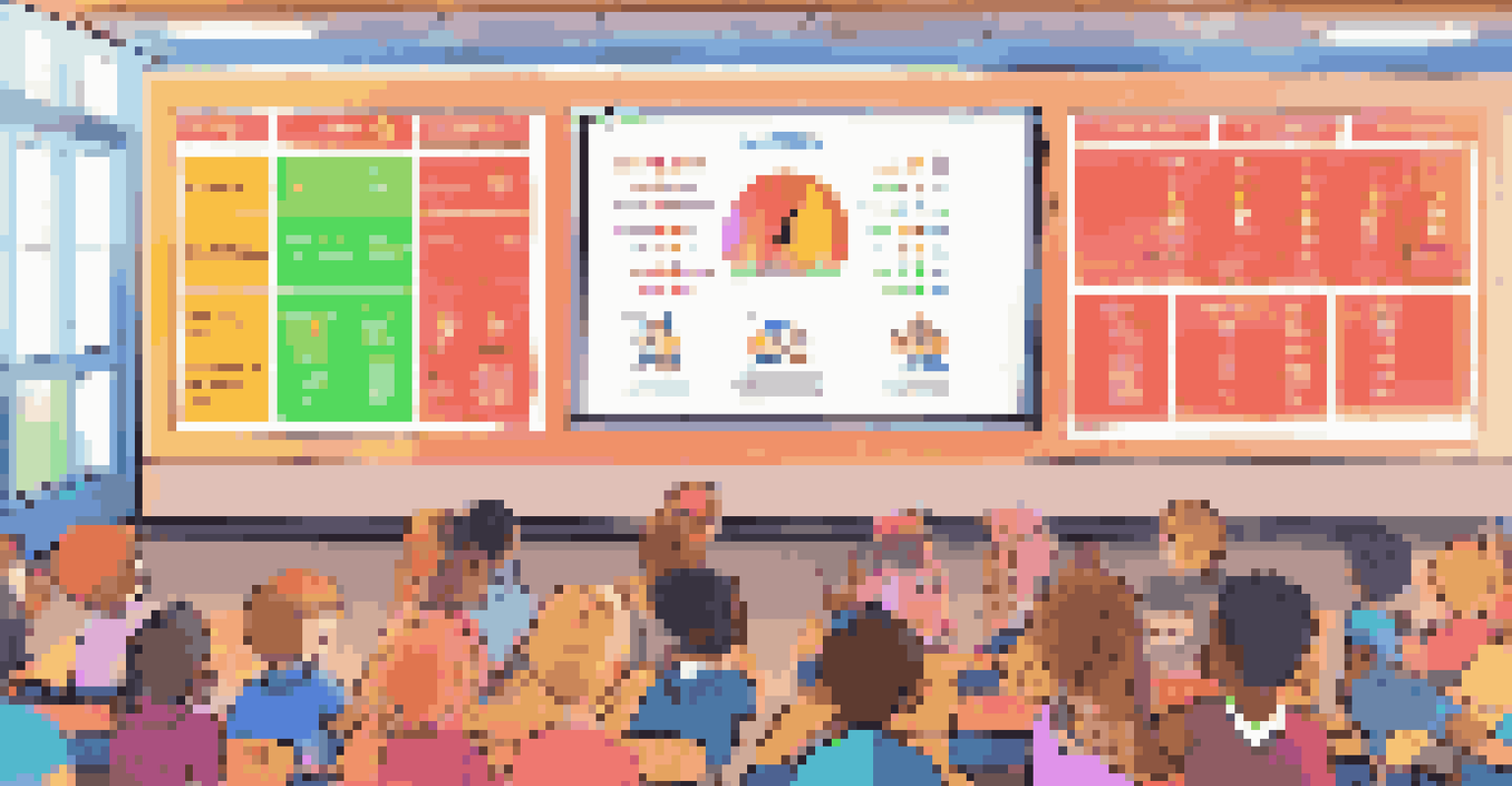Gamification Techniques for Enhancing Student Goal Setting Skills

Understanding Gamification and Its Benefits for Students
Gamification involves applying game design elements in non-game contexts to engage users. In education, this means using points, badges, and leaderboards to motivate students. The primary benefit is that it transforms mundane tasks into exciting challenges, making learning more engaging and enjoyable.
Games are the most elevated form of investigation.
By leveraging gamification, educators can foster a sense of achievement and motivation among students. For example, when students earn points for completing assignments, they are more likely to participate actively. This approach not only makes goal setting more appealing but also encourages a growth mindset.
Moreover, gamification can help students develop essential skills, such as goal setting and time management. As they navigate challenges and track their progress, they learn to set realistic and achievable goals, which are crucial for their academic success and future endeavors.
Setting Clear Goals: The First Step in Gamification
Before gamifying the learning process, it’s crucial to guide students in setting clear and achievable goals. Clarity in goal setting helps students know exactly what they are working towards. For instance, instead of saying 'improve math skills,' a clearer goal would be 'complete five math exercises each week.'

When students understand their goals, they are more likely to engage with the gamified elements designed to help them achieve those targets. This step also allows for the development of personalized learning paths, where students can set goals that are tailored to their individual needs and interests.
Gamification Boosts Student Engagement
Applying game design elements, such as points and badges, in education makes learning more engaging and enjoyable for students.
As they reach these goals, students can earn rewards, creating a cycle of motivation that encourages them to set even higher goals. This not only builds their confidence but also cultivates a proactive approach to learning and self-improvement.
Incorporating Points and Rewards into Goal Setting
One of the most effective gamification techniques is the use of points and rewards. By assigning points for completing tasks or achieving milestones, students can see tangible progress. This visibility not only boosts motivation but also reinforces the connection between effort and achievement.
The only way to win is to learn faster than anyone else.
Rewards can take various forms, from digital badges to tangible prizes, creating a sense of accomplishment. For example, a student might earn a badge for reading a certain number of books or completing a project ahead of schedule. These rewards provide instant gratification, encouraging students to continue their efforts.
Additionally, the competition that arises from a points system can foster camaraderie among students. Friendly competition can motivate them to support each other in reaching their goals, creating a collaborative learning environment that enhances the overall educational experience.
Using Leaderboards to Foster Healthy Competition
Leaderboards are a popular gamification tool that can effectively enhance goal setting among students. By displaying rankings based on points earned, students are motivated to strive for higher positions. This healthy competition can drive engagement and encourage students to push their limits.
However, it's essential to create a balanced approach to leaderboards. They should promote friendly competition rather than discourage those who may struggle. For instance, creating multiple leaderboards based on different criteria can allow all students to feel valued and included.
Clear Goals Enhance Learning Outcomes
Setting clear and achievable goals helps students focus their efforts and fosters a sense of accomplishment.
Moreover, students can learn from each other’s achievements displayed on leaderboards. This visibility can inspire them to set higher goals and adopt strategies used by their peers, fostering a culture of collaboration and shared success.
Feedback Loops: The Role of Instant Feedback in Learning
Incorporating feedback loops within gamification strategies can significantly enhance student goal setting skills. Instant feedback helps students understand their progress and areas for improvement. For example, when students receive immediate feedback on an assignment, they can adjust their efforts promptly to meet their goals.
This continuous feedback mechanism not only keeps students informed but also encourages self-reflection. They learn to assess their performance critically and make necessary adjustments to their strategies, which is a vital skill for lifelong learning.
Additionally, positive reinforcement through feedback can boost students' confidence. Celebrating small victories encourages them to persist in their efforts and set even more ambitious goals as they recognize their capability for growth.
Creating Collaborative Goals Through Group Challenges
Collaboration is a key aspect of gamification that can enhance goal setting skills. By engaging students in group challenges, they learn to work together towards common goals. This not only fosters teamwork but also teaches them the importance of collective effort in achieving success.
For instance, a class might embark on a project where they need to collectively earn a certain number of points within a timeframe. This shared objective encourages communication, planning, and coordination among team members, which are essential skills in both academic and real-world settings.
Collaboration Strengthens Learning
Group challenges in gamification encourage teamwork and communication, enhancing the overall educational experience.
Moreover, collaborating on goals allows students to leverage each other's strengths and support one another in overcoming challenges. This shared experience can build a supportive classroom community, making the learning process more enjoyable and effective.
Reflecting on Progress: The Importance of Self-Assessment
Reflection is a crucial component of effective goal setting, and gamification can facilitate this through structured self-assessment activities. Encouraging students to regularly evaluate their progress helps them understand what strategies are working and where they may need to adjust their approach.
For example, after completing a gamified module, students can fill out a quick reflection questionnaire on their achievements and challenges. This practice not only reinforces their learning but also cultivates a growth mindset, where they view setbacks as opportunities for improvement.

Incorporating reflection into the gamification process allows students to take ownership of their learning journey. They become more aware of their habits and preferences, enabling them to set more personalized and meaningful goals in the future.